Update: Nepera was demolished in 2015
The history of Nepera Chemical plant in Harriman, NY reads like a painfully predictable movie script about a Big Bad Chemical Company near a Quaint Little Town where residents suffer abnormally high cancer rates and birth defects. Situated too fucking close to the local well and a school, the plant began operations in 1942 and was widely despised until its closing in 2005. It manufactured “pharmaceutical chemicals and intermediate chemicals used in herbicides, pesticides, and other chemicals,” the waste of which was unsafely “contained” on-site.
From 1953 to 1967, the plant dumped its chemical and sewage waste in state-sanctioned “lagoons,” which were part of the site’s nearly 30 acres. The two original lagoons eventually expanded to six large horrifying pools, each measuring 180 feet long, 70 feet wide, and 6 feet deep.
A Bing Maps areal shot (above) of the plant in 2013 and what is now the empty fields where the lagoons were (below)
Leaks in the lagoons were discovered in ’58 and ‘60, which were situated a mere 800 feet from the Maybrook Well Field, because of course they were. However, the use of the lagoons didn’t stop until ’67. By ’74, all the lagoons had been filled in with dirt, which became toxic, and the property was fenced in to prevent the spreading of the contaminated soil.
By the 1980’s, the plant was the nation’s second largest producer of pyridine, a chemical (composed of 10 other chemicals, some of which were toxic) used in pesticides, solvents, and anti-dandruff shampoo.
They also made niacin/B3- a food additive, which was used to enhance pet food and human food.
In 1984, an industrial gas leak in India, known as the Bhopal disaster, caused the immediate deaths of almost 4,000 people, the eventual deaths of around 16,000 and over half a million injuries. The incident led to an overhaul of environmental legislation, creating the Superfund Amendment Reauthorization Act, or, SARA, which required chemical plants to disclose specifics about their pollutants to the community.
Nepera struggled to comply with SARA since it required extensive extra hours, finances, employees, and paperwork the company was ill-equipped to handle. The company spent the next few decades under constant (legitimate) scrutiny. In 1991, three substantial drums of contaminates were discovered buried in the back where the lagoons had been located. In 2000, a school a mile away was shut down twice over reports of nausea, dizziness, and rashes after a leak at the plant released toxic pyridine fumes. 2002 saw a change of ownership, but the plant was abandoned by 2005.
Two years after the plant closed, the property was purchased by the ambiguously named Commercial Development Company Inc, which is what I’d name a company as a joke. The company purchases/clears/develops/re-sells environmentally unstable and/or otherwise difficult property. Their past purchases reads like a laundry list of reasons why there are holes in the ozone layer: Kaiser Aluminum, Millennium Chemicals, Reeves Chemicals, Alpha Cement, Armco Steel, etc…and my favorites: Fruit-of-the-Loom, Kraft General Foods, and the United States Treasury.
In 2011, the EPA ordered an extensive cleaning of the site, including the removal of toxic soil and treatment of the groundwater. 83,000 tons of contaminated dirt had been removed by 2012, and the groundwater was continually monitored. As of 2014, the site remains abandoned.
Old railroad racks outside the plant along the fence.
We kept joking that the biohazard suits and the way the floor has peeled make it look as though the people vaporized in a chemical explosion, but in reality, they were most likely placed there as a prank.
For more photos, go to the Harriamn Chemical Plant photo sets on Flickr
————
Disclaimer: If any information is incorrect, if you have more info, or if you’d just like to tell me something, feel free to contact me.
To support my work and see new comics, go here. To buy books, original artwork, merch, and more, visit my website store. Follow me on instagram.




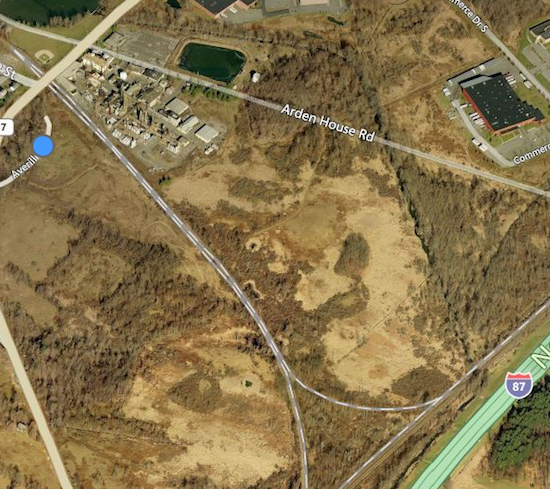


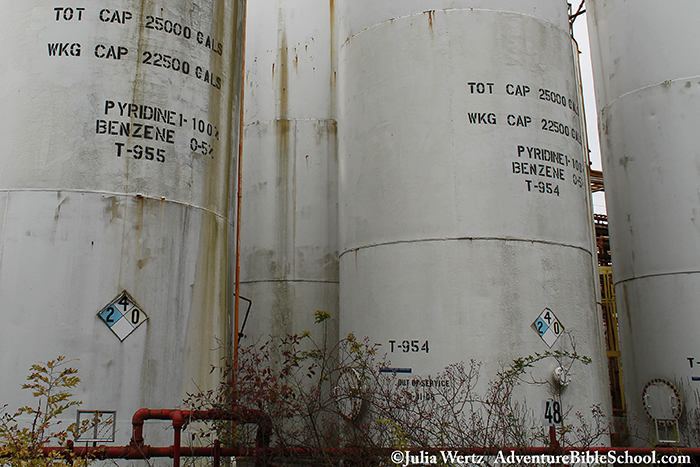


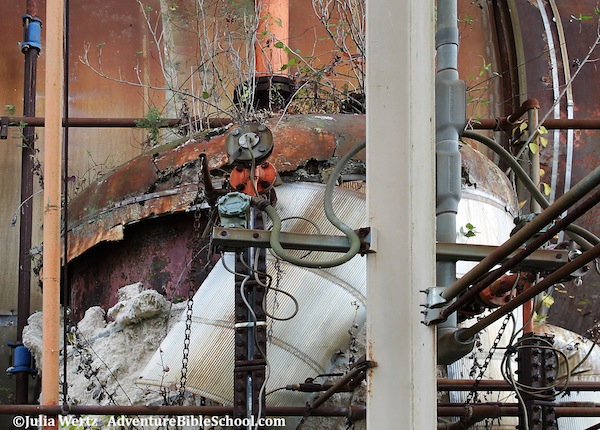
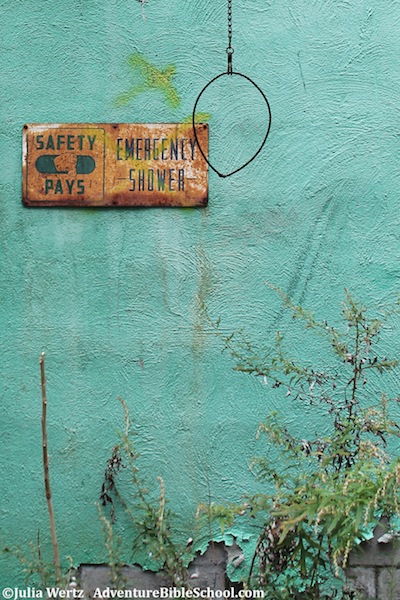



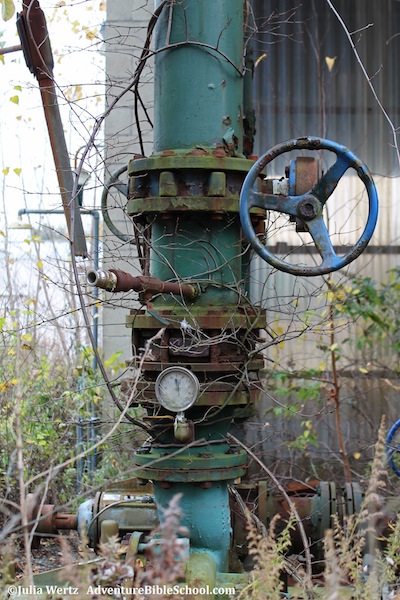
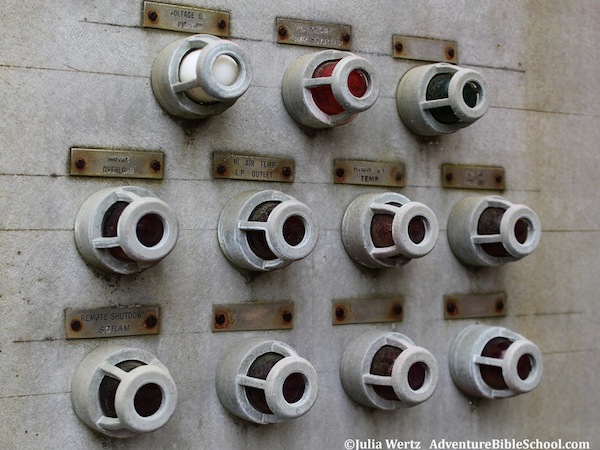

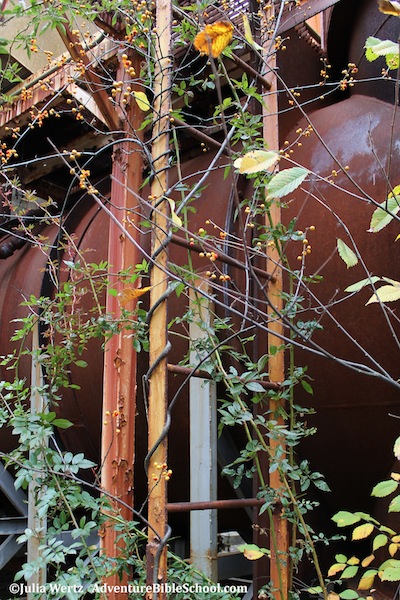

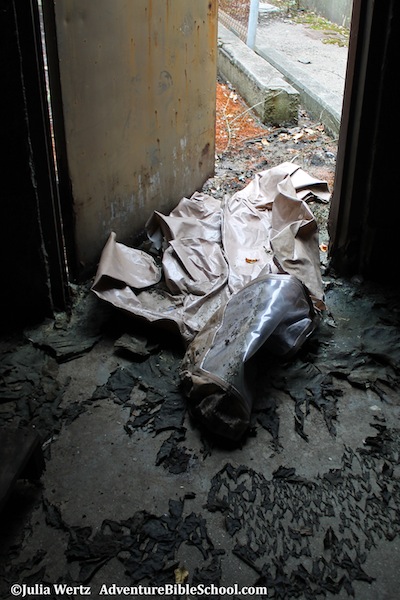



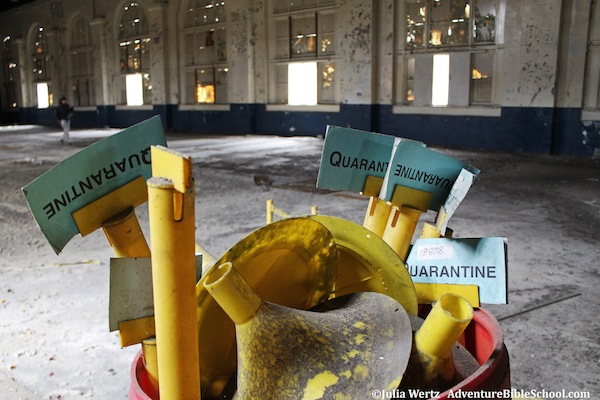
Sorry, the comment form is closed at this time.